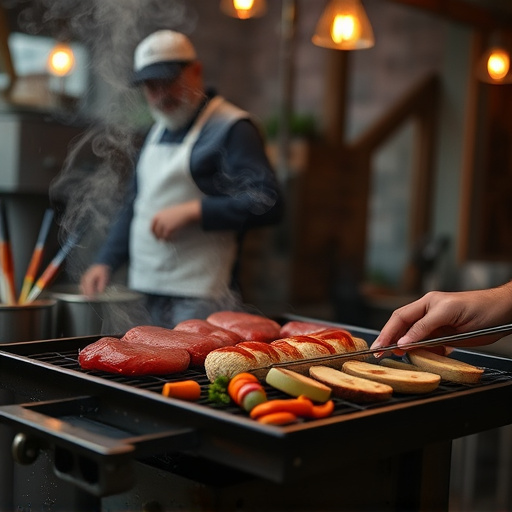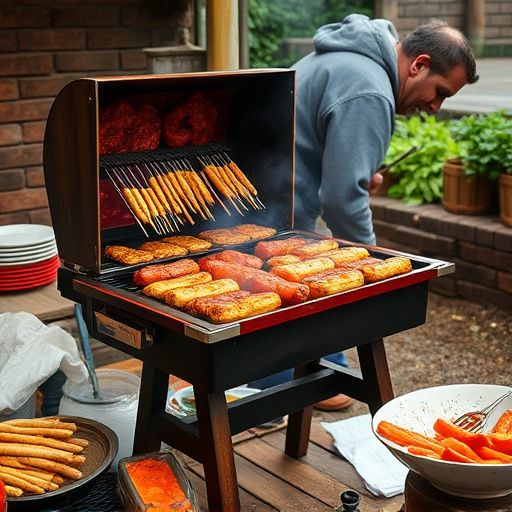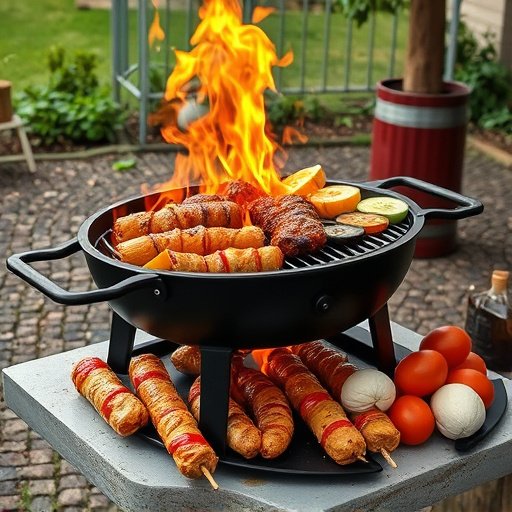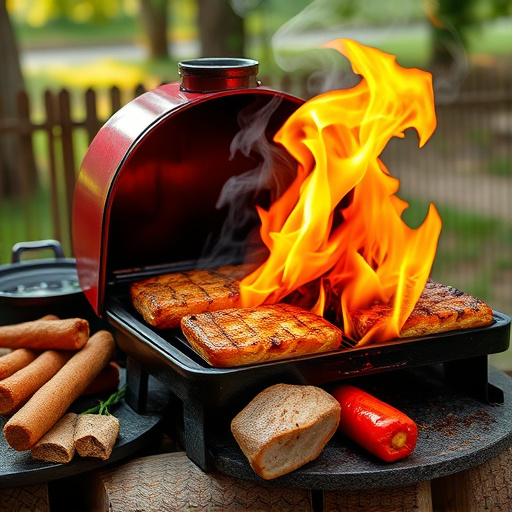Choosing the perfect cut of meaty, marbled pork ribs from grass-fed, free-range pigs is key for an exceptional BBQ pork rib recipe. Cooking methods vary by cut – direct heat grilling for St. Louis style, saucing for baby back, and low & slow smoking for spareribs. Quality and freshness matter; select recently cut ribs with bright red/pink meat from local butchers or trusted suppliers, keeping them refrigerated until cooking to prevent bacterial growth.
Discover the secrets to crafting the perfect BBQ pork rib recipe with this comprehensive guide. From choosing the right cuts like St. Louis-style, baby back, and spareribs to mastering seasoning techniques with dry rubs, sauces, and brining (optional), every step ensures mouthwatering results. Learn effective cooking methods, from indirect heat and smoking to grilling and slow-cooking, to achieve ribs that are tender, flavorful, and perfectly glazed.
- Choosing the Right Ribs for Your BBQ
- – Different cuts of pork ribs: St. Louis-style, baby back, spareribs, etc.
- – Understanding rib quality and freshness
Choosing the Right Ribs for Your BBQ

When it comes to a mouthwatering BBQ pork ribs recipe, the first step starts with selecting the perfect cut. Look for meaty, well-marbled ribs with a good amount of fat—this ensures they’ll stay tender and juicy during the slow cooking process. The most common types are baby back or spare rib, both offering a balance of meat to bone that’s ideal for BBQ.
Consider the source too; pork ribs from grass-fed, free-range pigs often result in richer, more flavourful meat. Remember, the key to a successful BBQ pork ribs recipe is patience—allowing the low and slow cooking method to tenderize the tough rib cage while infusing it with delicious smokey flavours from your grill or smoker.
– Different cuts of pork ribs: St. Louis-style, baby back, spareribs, etc.

When it comes to BBQ pork ribs, there are several cuts that each offer a unique experience. The most popular styles include St. Louis-style ribs, known for their meaty, full-rib presentation and often finished with a dry rub. Baby back ribs, on the other hand, are slightly smaller and more tender, typically slathered in sauce during cooking for added moisture and flavor. Spareribs, named for the spare meat between the bones, are hearty and ideal for slow-cooking methods that render the collagen into a melt-in-your-mouth texture.
Each cut has its own cooking method and preferences. St. Louis-style ribs often benefit from direct heat grilling to caramelize the exterior while keeping the interior juicy. Baby back ribs usually require a more indirect approach, with sauce adding both sweetness and moisture as they cook. Spareribs do well in low-and-slow methods like smoking, which breaks down tough connective tissues, resulting in tender, flavorful meat that glistens with rendered fat.
– Understanding rib quality and freshness

When it comes to BBQ pork ribs, understanding quality and freshness is key to an exceptional culinary experience. Look for ribs that are meaty, with a good amount of marbling—this natural fat ensures juicy, tender meat. Freshness matters; opt for ribs that are recently cut, typically from a local butcher or a trusted supplier, to guarantee optimal flavor and texture.
Check for signs of quality like bright red or pink meat (indicating freshness) and avoid any with a strong “off” odor or visible signs of damage. Proper storage is also vital; keep ribs refrigerated until ready to cook, and never leave them at room temperature for extended periods to maintain their freshness and prevent bacterial growth, especially when preparing a delicious BBQ pork rib recipe.
